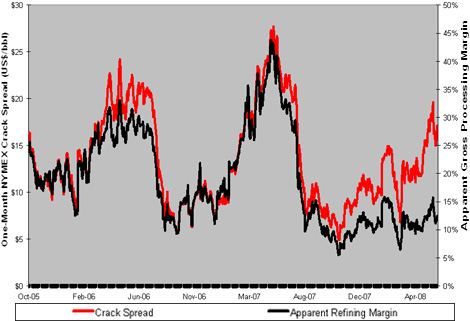This post is for all you traders out there, in the field of trading, we are know how we beat ourselves up over and over again... After trading actively for abit over 6 years now, I look at this list and realized how true this learning process is and how funny it is when I get people telling me what stock to buy and how easy is to make money LOL... So, which step are you on?
THEY ARE AS FOLLOW:
1. We accumulate information - buying books, going to seminars and researching.
2. We begin to trade with our 'new' knowledge.
3. We consistently 'donate' and then realise we may need more knowledge or information.
4. We accumulate more information.
5. We switch the commodities we are currently following.
6. We go back into the market and trade with our 'updated' knowledge.
7. We get 'beat up' again and begin to lose some of our confidence. Fear starts setting in.
8. We start to listen to 'outside news' and to other traders.
9. We go back into the market and continue to 'donate'.
10. We switch commodities again.
11. We search for more information.
12. We go back into the market and start to see a little progress.
13. We get 'over-confident' and the market humbles us.
14. We start to understand that trading successfully is going to take more time and more knowledge than we anticipated.
MOST PEOPLE WILL GIVE UP AT THIS POINT, AS THEY REALISE WORK IS INVOLVED
15. We get serious and start concentrating on learning a 'real' methodology.
16. We trade our methodology with some success, but realise that something is missing.
17. We begin to understand the need for having rules to apply our methodology.
18. We take a sabbatical from trading to develop and research our trading rules.
19. We start trading again, this time with rules and find some success, but over all we still hesitate when we execute.
20. We add, subtract and modify rules as we see a need to be more proficient with our rules.
21. We feel we are very close to crossing that threshold of successful trading.
22. We start to take responsibility for our trading results as we understand that our success is in us, not the methodology.
23. We continue to trade and become more proficient with our methodology and our rules.
24. As we trade we still have a tendency to violate our rules and our results are still erratic.
25. We know we are close.
26. We go back and research our rules.
27. We build the confidence in our rules and go back into the market and trade.
28. Our trading results are getting better, but we are still hesitating in executing our rules.
29. We now see the importance of following our rules as we see the results of our trades when we don't follow the rules.
30. We begin to see that our lack of success is within us (a lack of discipline in following the rules because of some kind of fear) and we begin to work on knowing ourselves better.
31. We continue to trade and the market teaches us more and more about ourselves.
32. We master our methodology and our trading rules.
33. We begin to consistently make money.
34. We get a little over-confident and the market humbles us.
35. We continue to learn our lessons.
36. We stop thinking and allow our rules to trade for us (trading becomes boring, but successful) and our trading account
continues to grow as we increase our contract size.
37. We are making more money than we ever dreamed possible.
38. We go on with our lives and accomplish many of the goals we had always dreamed of.











